If you’re not from Indonesia—specifically West Java—there’s a good chance you’ve never heard of sauté leunca. This dish, featuring the unique vegetable leunca, is a hidden treasure of Indonesian cuisine. Beloved by locals but relatively unknown outside Indonesia, sauté leunca showcases the essence of Sundanese cooking, emphasizing fresh ingredients, bold flavors, and simple preparation methods.
Table of Contents
As an Indonesian living in Singapore, I often crave the flavors of home. Among the many dishes I miss, sauté leunca holds a special place in my heart. While Singapore is geographically close to Indonesia, many Indonesian vegetables, including leunca, are not widely available here. When my housekeeper mentioned seeing leunca at a local market, I couldn’t contain my excitement. I immediately asked her to buy it, knowing I had to recreate sauté leunca and share this delicious recipe with you.
Whether you’re already familiar with leunca or hearing about it for the first time, this post will guide you through everything you need to know about this incredible dish. From what leunca is to the benefits of cooking sauté leunca and how to adapt the recipe if you can’t find the vegetable, you’ll learn why this dish deserves a place in your kitchen.
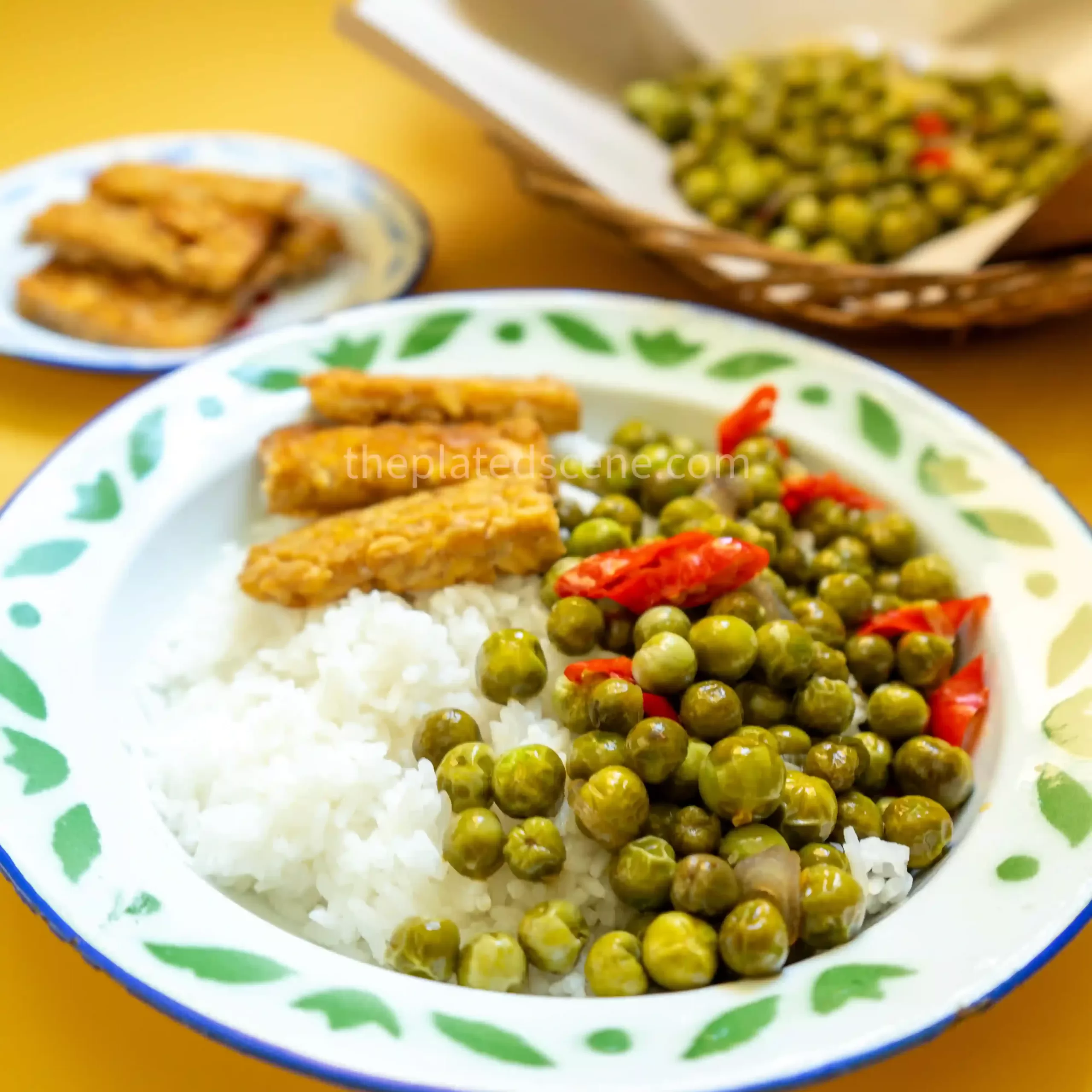
What Is Leunca?
The star of sauté leunca is, of course, leunca. Scientifically known as Solanum nigrum, leunca is a small, round berry that belongs to the nightshade family. Widely used in Sundanese cuisine, it is loved for its slightly bitter taste and unique texture. Leunca berries are green when raw and turn black when ripe, but both stages are suitable for cooking.
Leunca is an ingredient that many Indonesians hold dear, particularly those from West Java. In dishes like sauté leunca, it adds a slight bitterness that balances perfectly with the savory and spicy elements of the dish. If you’ve never tried leunca, imagine a cross between eggplant and blueberries. It has the earthy, mildly bitter eggplant flavor combined with a berry’s slight pop and juiciness. However, unlike blueberries, leunca isn’t sweet—it’s all about that distinctive bitter and vegetal taste.
The Unique Flavor of Sauté Leunca
If you’re hesitant about bitter flavors, don’t worry—sauté leunca balances bitterness with aromatics like garlic, shallots, chilies, and umami-rich seasonings. The result is a dish that’s flavorful, comforting, and surprisingly addictive. The bitterness of leunca transforms through cooking, mellowing into a complex, earthy flavor that pairs beautifully with steamed rice and other Indonesian dishes.
For me, the first bite of sauté leunca always brings nostalgia. It’s a dish I grew up eating in Indonesia, prepared lovingly by my mother. Even now, the aroma of garlic and shallots sizzling in oil and the sight of leunca turning soft and brown instantly transports me back to those moments in our family kitchen.
Health Benefits of Sauté Leunca
Aside from its delicious flavor, one of the reasons sauté leunca is so beloved is its nutritional value. Leunca is packed with antioxidants, vitamins, and minerals that promote overall health. Here are just a few of the benefits of including leunca in your diet:
- Rich in antioxidants: Leunca contains compounds like saponins and tannins, which help protect your body from free radical damage.
- Anti-inflammatory properties: These compounds can reduce inflammation, making leunca beneficial for people with chronic conditions.
- Digestive support: Leunca traditionally alleviates digestive issues, including diarrhea.
- Immune-boosting nutrients: The vitamins A and C in leunca support a healthy immune system.
By cooking sauté leunca, you’re enjoying a flavorful meal and giving your body a dose of nutritious, plant-based goodness.
Cultural Significance of Sauté Leunca in Indonesia
In Sundanese culture, sauté leunca is more than just a dish—it reflects a way of life. Sundanese cuisine relies on fresh vegetables, which are often eaten raw or lightly cooked to preserve their natural flavors and nutrients. Leunca is a quintessential ingredient in Sundanese kitchens, appearing in raw salads (lalapan) and cooked dishes like tumis leunca or tumis oncom leunca.
Eating sauté leunca is often a communal experience shared with family and friends. In traditional Sundanese meals, sauté leunca is served alongside steamed rice, sambal, and fried or grilled proteins like chicken or fish. The bitter notes of leunca, combined with the heat of sambal, create a harmonious balance of flavors that exemplifies Sundanese cooking.
Multiple Ways to Enjoy Leunca
Leunca is a versatile ingredient that can be enjoyed in a variety of ways:
- Raw as “Lalapan”
In West Java, leunca is often served raw as part of a traditional Sundanese salad called lalapan. This simple dish is typically paired with a spicy sambal, steamed rice, and fried protein like chicken or fish. Eating leunca raw allows you to experience its actual, unaltered bitterness, which complements the spicy and savory flavors of the meal. (Want to see what lalapan looks like? Check out this YouTube video to visualize it better!) - Sautéed with Oncom
A classic Sundanese pairing is leunca with oncom, a fermented soybean cake similar to tempeh. Oncom adds a nutty, earthy flavor that complements the bitterness of leunca. Unfortunately, oncom is hard to find outside Indonesia because it’s a highly perishable ingredient. If you’re lucky enough to visit Indonesia, I highly recommend trying this iconic combination—it’s worth the trip!(Image source: Tumis Oncom Leunca) - Simple Sauté (Tumis Leunca)
The simplest and perhaps most popular way to enjoy leunca is by sautéing it with garlic, shallots, chilies, and a touch of seasoning. This is the recipe I’m sharing with you today. It’s quick, easy, and incredibly flavorful. Whenever my mother makes it, I eat multiple servings in a warm rice bowl—it’s just that good!
Adapting Sauté Leunca for International Kitchens
If you live outside Indonesia, finding leunca might be a challenge. However, one of the great things about sauté leunca is its adaptability. While nothing quite matches the unique taste and texture of leunca, the following vegetables make excellent substitutes:
- Long beans: For their crunchy texture.
- Bitter gourd: To replicate the bitterness.
- Broccoli or kale: For a hearty alternative.
These substitutes allow you to enjoy the flavors and spirit of sauté leunca even if you don’t have access to the original ingredient.
Why Sauté Leunca Deserves a Place in Your Kitchen
If you’re new to sauté leunca, you might wonder what makes it so unique. Here’s why this dish is worth trying:
- Unique Flavors: The combination of bitterness, spice, and umami is unlike anything else.
- Nutritional Benefits: Packed with antioxidants and essential nutrients, sauté leunca is as healthy as it is delicious.
- Cultural Experience: Cooking and eating sauté leunca connects you to the rich traditions of Indonesian cuisine.
- Quick and Easy: The dish comes together in less than 30 minutes, making it ideal for weeknight meals.
- Versatility: You can easily customize the recipe with different vegetables and seasonings.
Ingredients for Sauté Leunca
To create the perfect sauté leunca, you’ll need just a handful of simple ingredients to make a delicious, flavor-packed dish. If you can’t find leunca, don’t worry—this recipe is versatile and allows for substitutions while still delivering the essence of this classic Indonesian dish.
1. Leunca
The star ingredient of sauté leunca is, of course, leunca. When cooked, these small, round berries have a slightly bitter flavor and a soft, juicy texture. Remove the stems and wash the leunca thoroughly before use. You can use raw (green) and ripe (black) leunca; their flavors are similar.
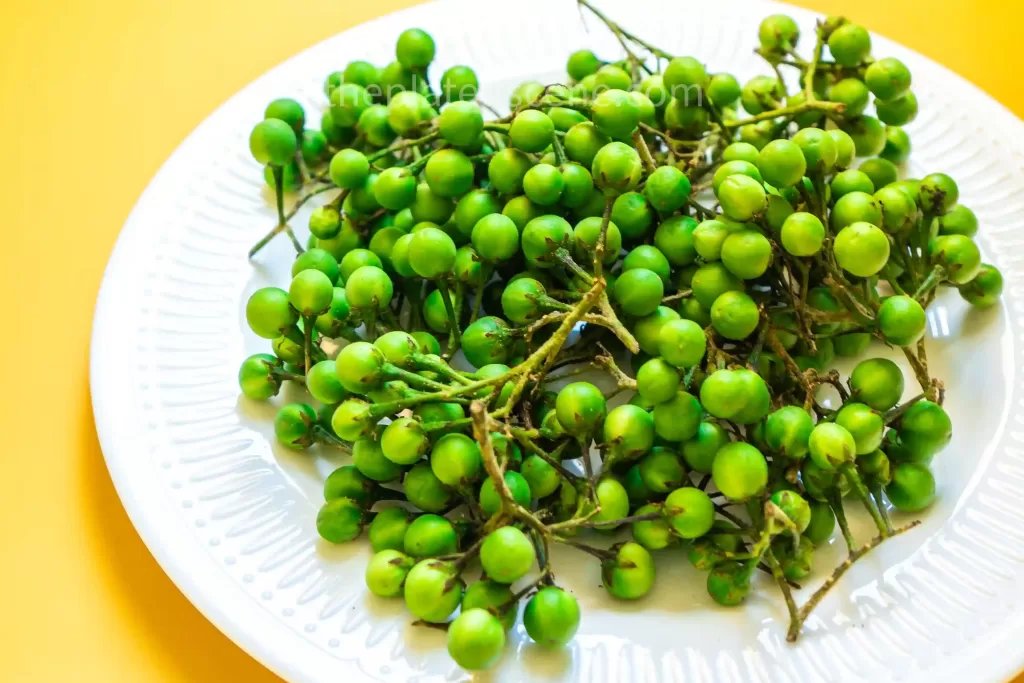
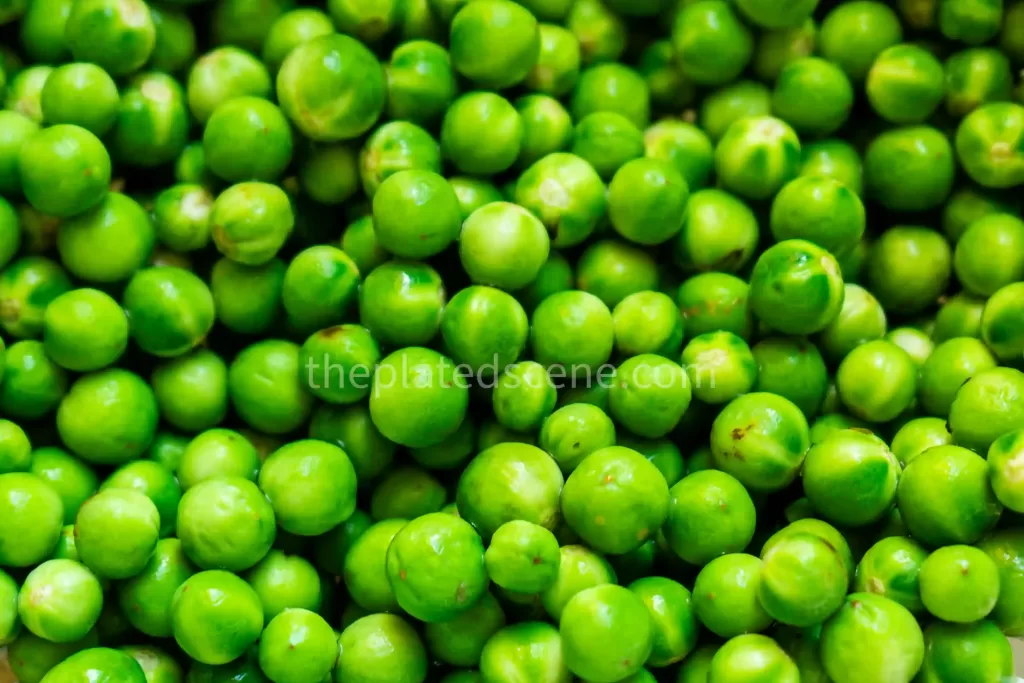
Don’t have leunca? Substitute with long beans, bitter gourd, kale, or broccoli for a similar flavor and texture. While these substitutes won’t perfectly replicate leunca, they will still give your sauté leunca a unique and satisfying taste.
2. Garlic and Shallots
Garlic and shallots are essential aromatics for sauté leunca, forming the flavorful base of the dish. Slice them thinly for maximum flavor release during sautéing. If you prefer not to eat the garlic and shallots, you can slice them more thickly, making them easier to remove before serving.
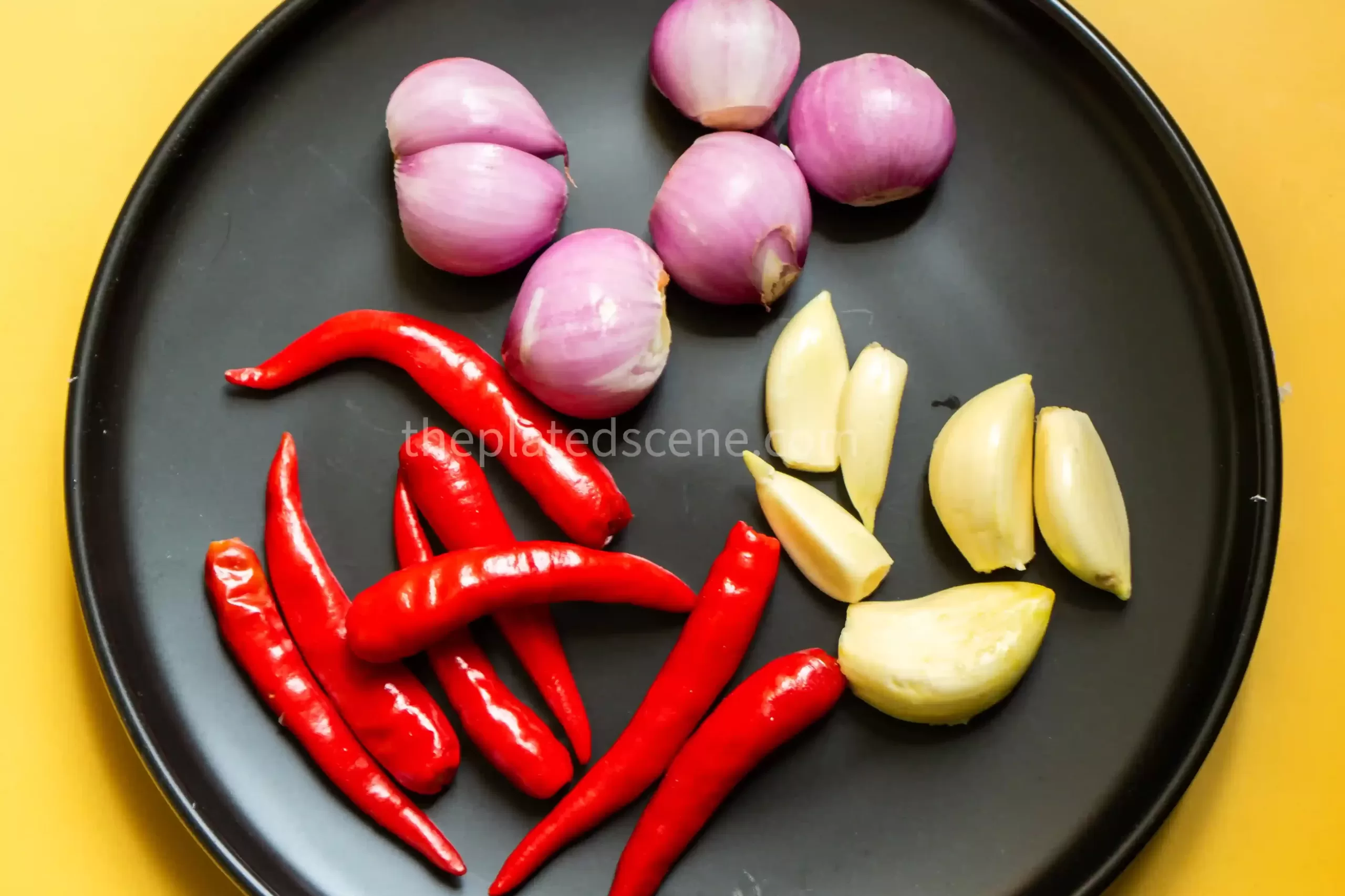
3. Red Chilies
Chilies are a must for adding a spicy kick to your sauté leunca. Slice the chilies diagonally into 1 cm pieces. Adjust the quantity based on your spice tolerance:
- For mild heat, use large red chilies.
- For extra spiciness, include bird’s eye chilies.
Feel free to omit the chilies if you’re not a fan of spicy food.
4. Mushroom Stock
To add umami depth to your sauté leunca, use mushroom stock. This plant-based seasoning enhances the dish’s savory flavor without overpowering the natural taste of the leunca. If you don’t have mushroom stock, you can substitute vegetables or a pinch of salt.
5. Salt
Salt is a simple yet essential ingredient for bringing out the flavors of the leunca and other components in the dish. Season the sauté leunca to taste, adding more or less depending on your preference.
6. Cooking Oil
Use a neutral cooking oil, such as vegetable oil, for sautéing. A small amount of oil is all you need to bring out the aromatics’ flavors and cook the leunca to perfection.
Optional Additions for Your Sauté Leunca
If you’d like to customize your sauté leunca, consider adding these optional ingredients for extra texture and flavor:
- Tempeh or Tofu: Dice and sauté them alongside the leunca for a protein-rich variation.
- Dried Anchovies (Ikan Teri): Add a crispy, umami-rich element to the dish.
- Peanuts: Toss in some roasted peanuts for a crunchy contrast.
Step-by-Step Guide to Make Sauté Leunca
Step 1: Prepare the Ingredients
Before you start cooking, ensure all your ingredients for sauté leunca are ready:
- Remove the stems from the leunca, wash thoroughly, and let it drain.
- Thinly slice the garlic and shallots. If you prefer not to eat them, slice them more thickly for easy removal later.
- Slice the chilies diagonally into 1 cm pieces. Adjust the quantity based on your spice tolerance.
Step 2: Sauté the Aromatics
Heat 2 tablespoons of cooking oil over low to medium heat. Add the sliced garlic and shallots, and sauté them gently. Stir continuously to prevent burning and ensure even cooking.
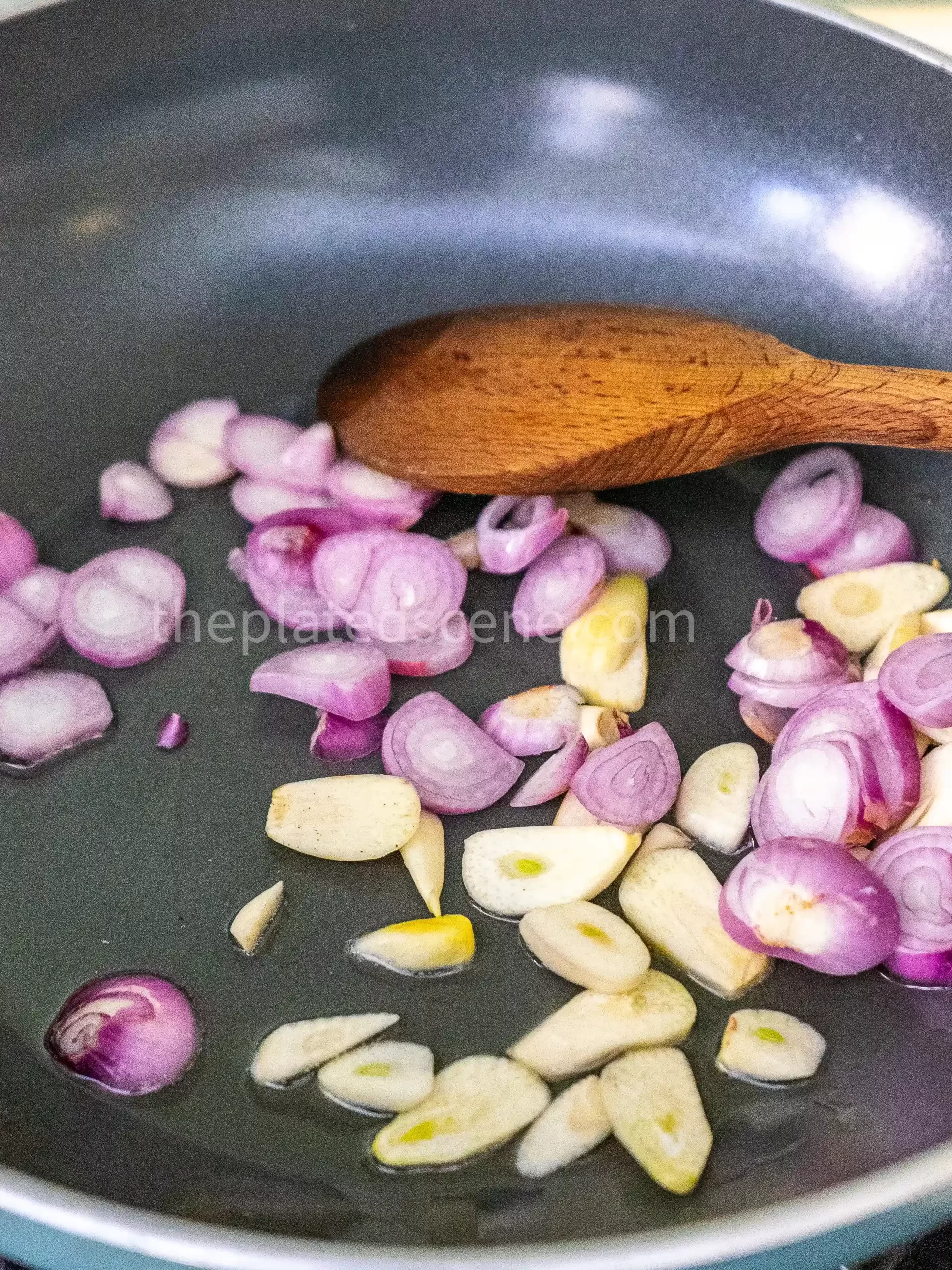
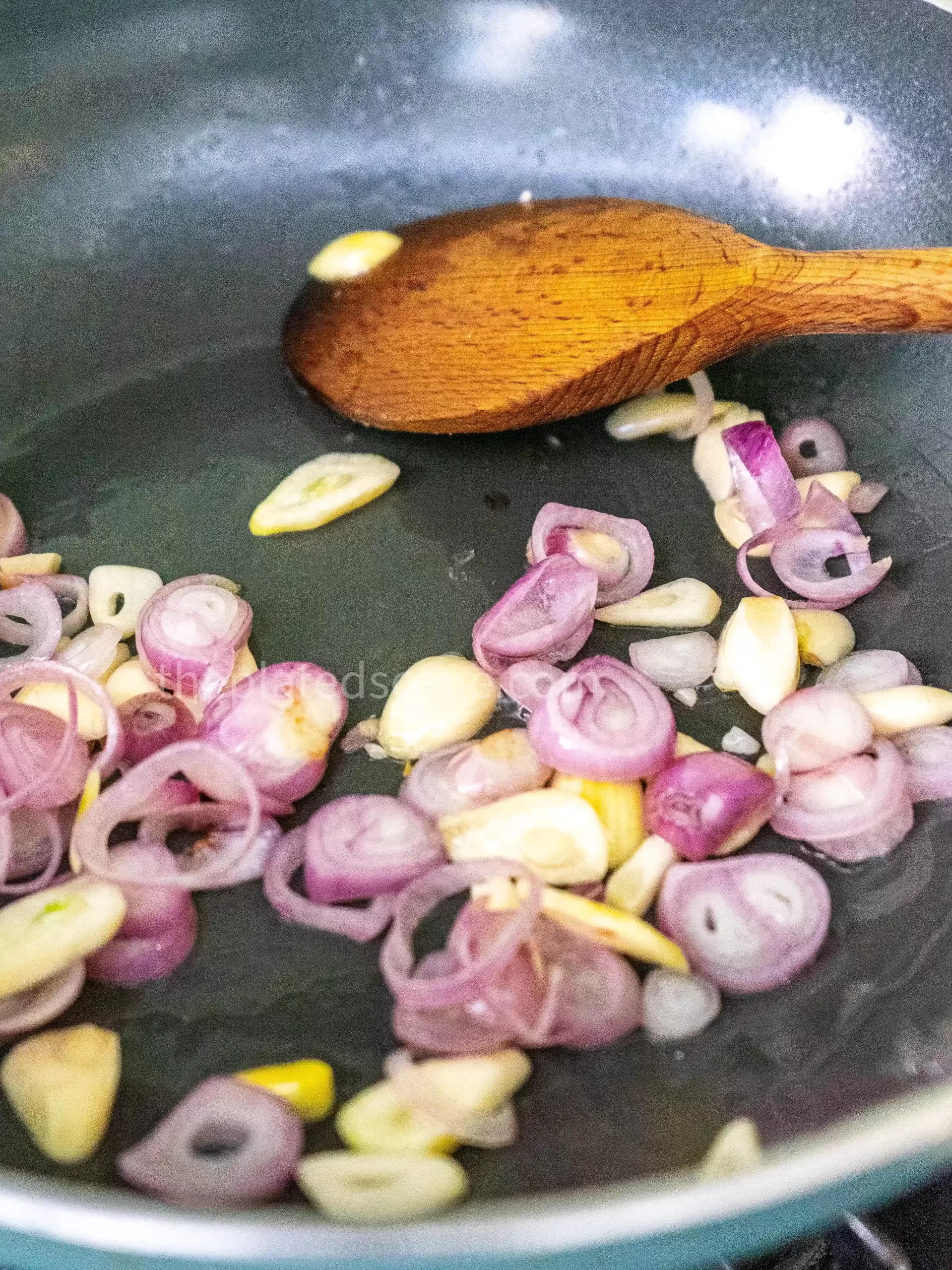
When the garlic and shallots turn golden brown and release their aroma, you create a flavorful base for your sauté leunca. This step usually takes 2-3 minutes.
Step 3: Add the Chilies
Toss in the sliced chilies and mix well. The heat will release the chilies’ natural oils, intensifying their flavor and adding a spicy aroma to your sauté leunca. Stir the mixture for another 1-2 minutes, careful not to let the chilies burn.
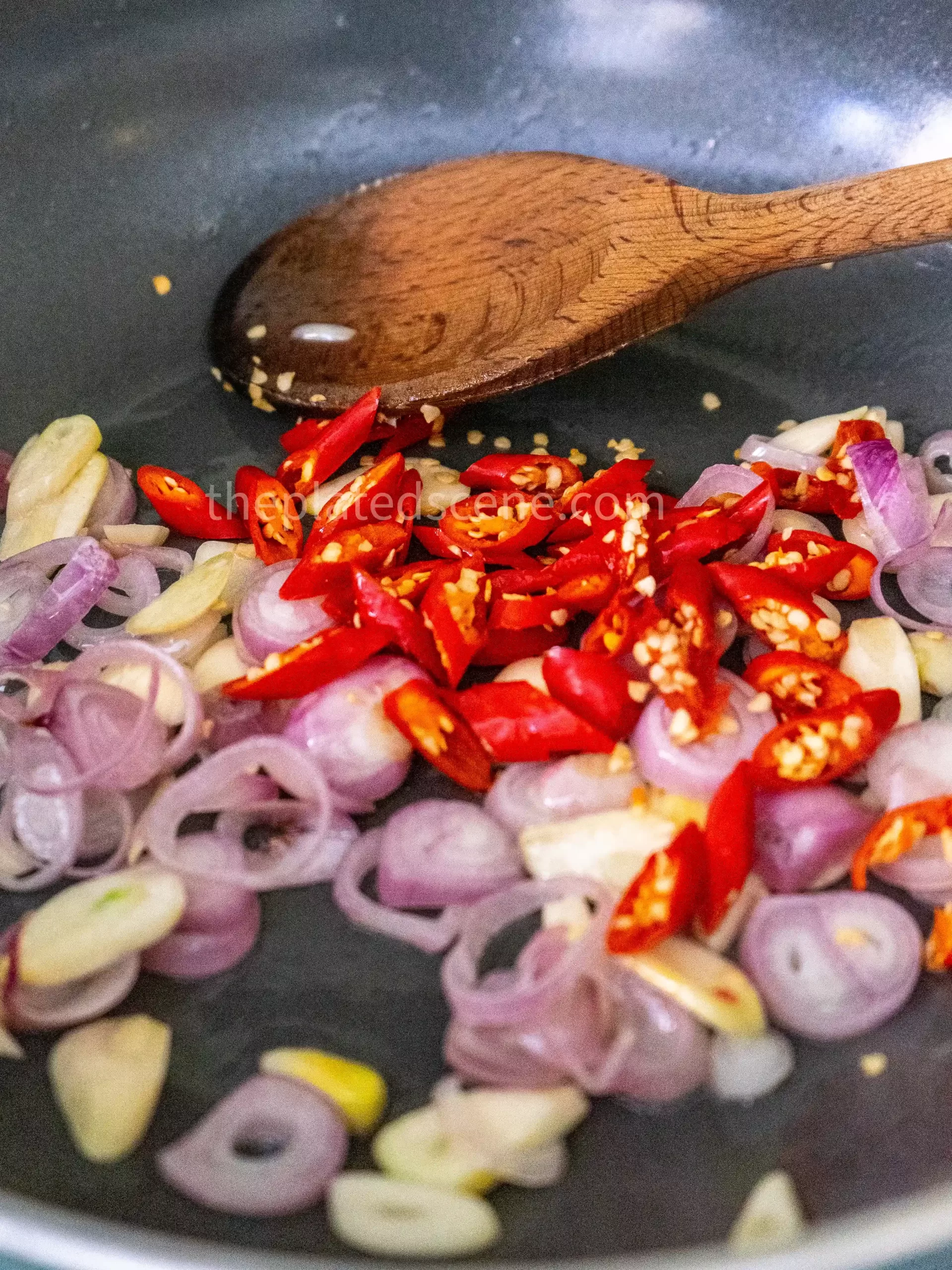
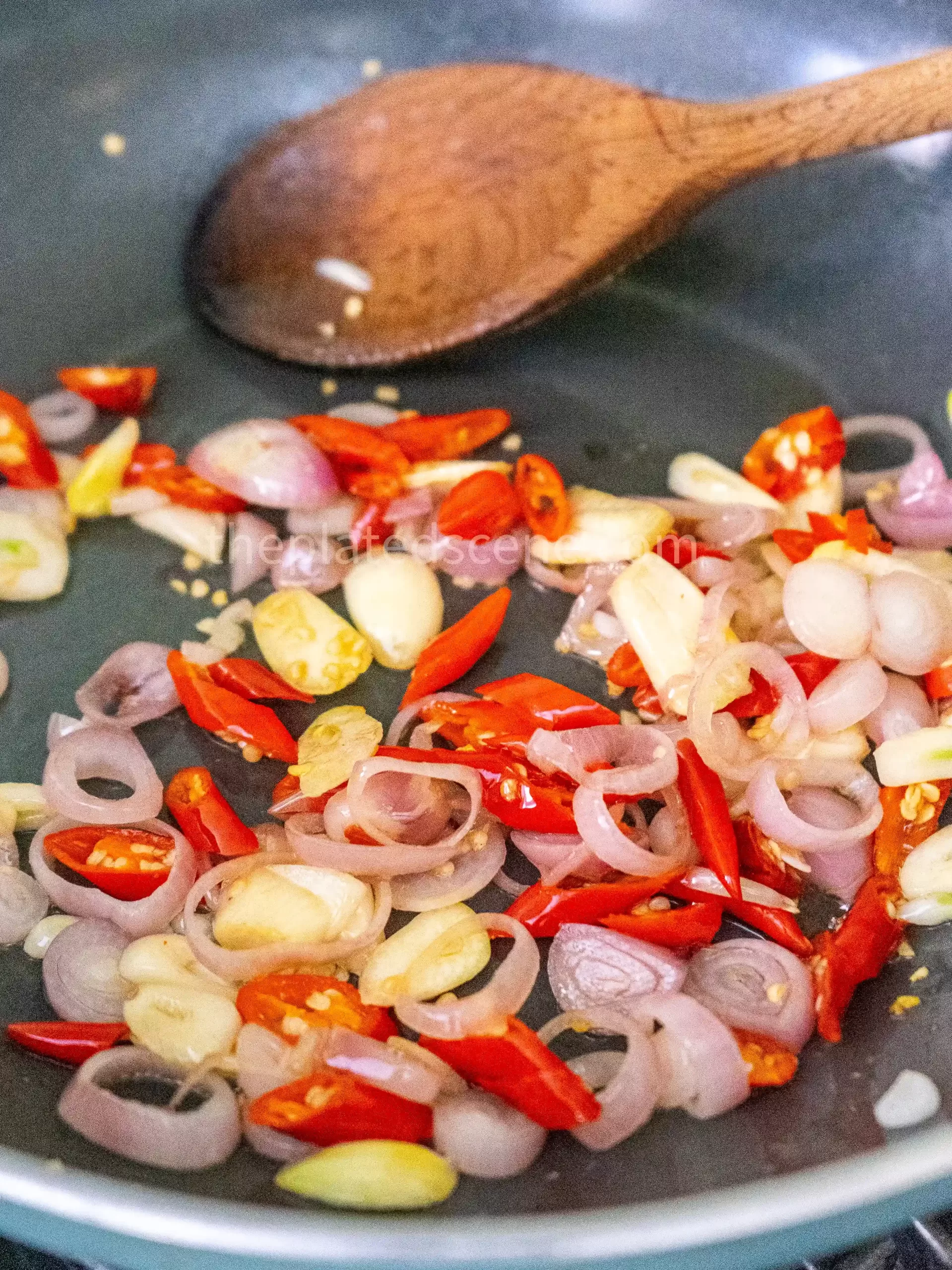
Step 4: Cook the Leunca
Add the leunca to the pan and stir until it is evenly coated with the aromatic mixture. Cover the pan with a lid to trap the heat, allowing the leunca to cook thoroughly.
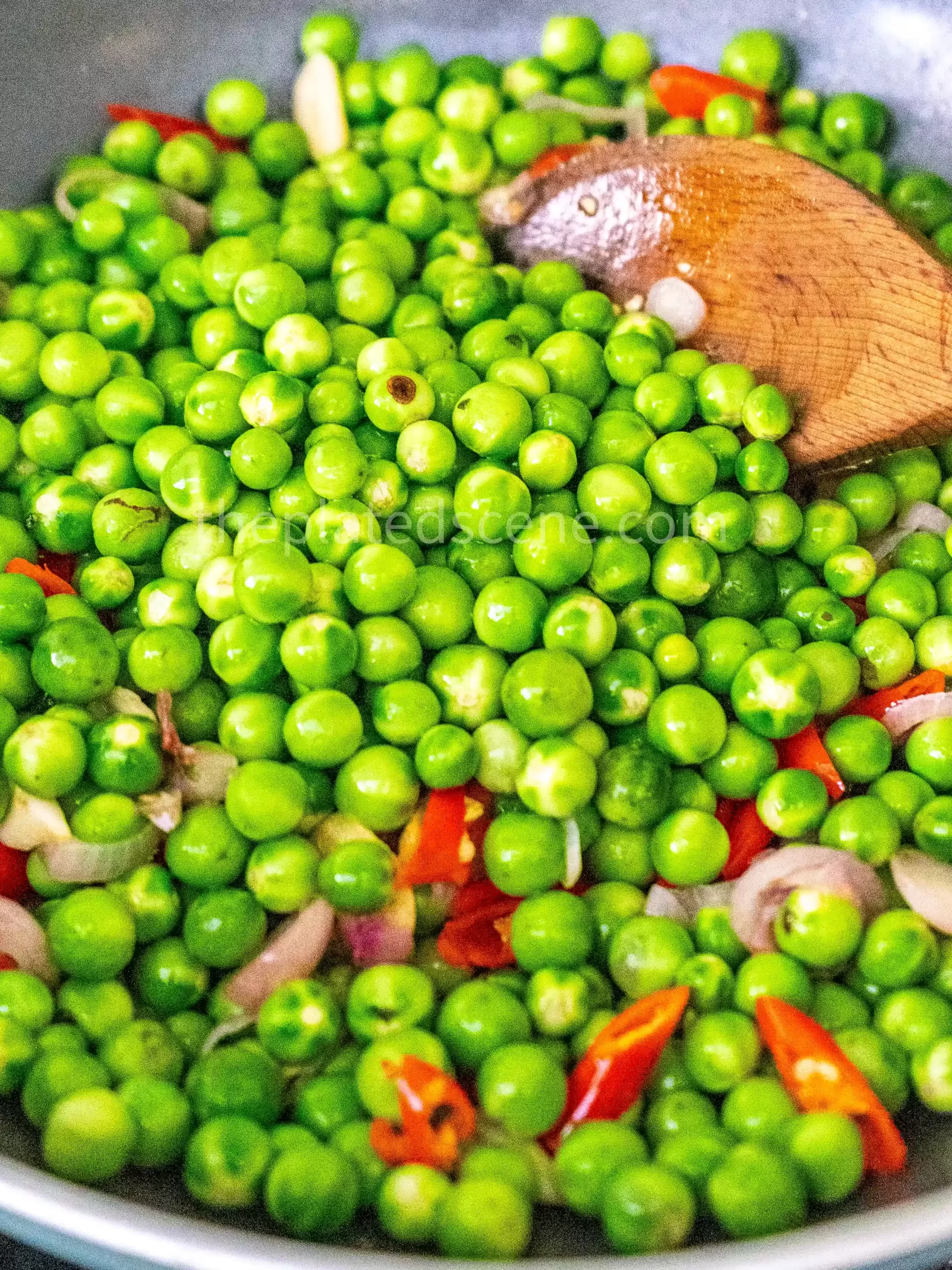
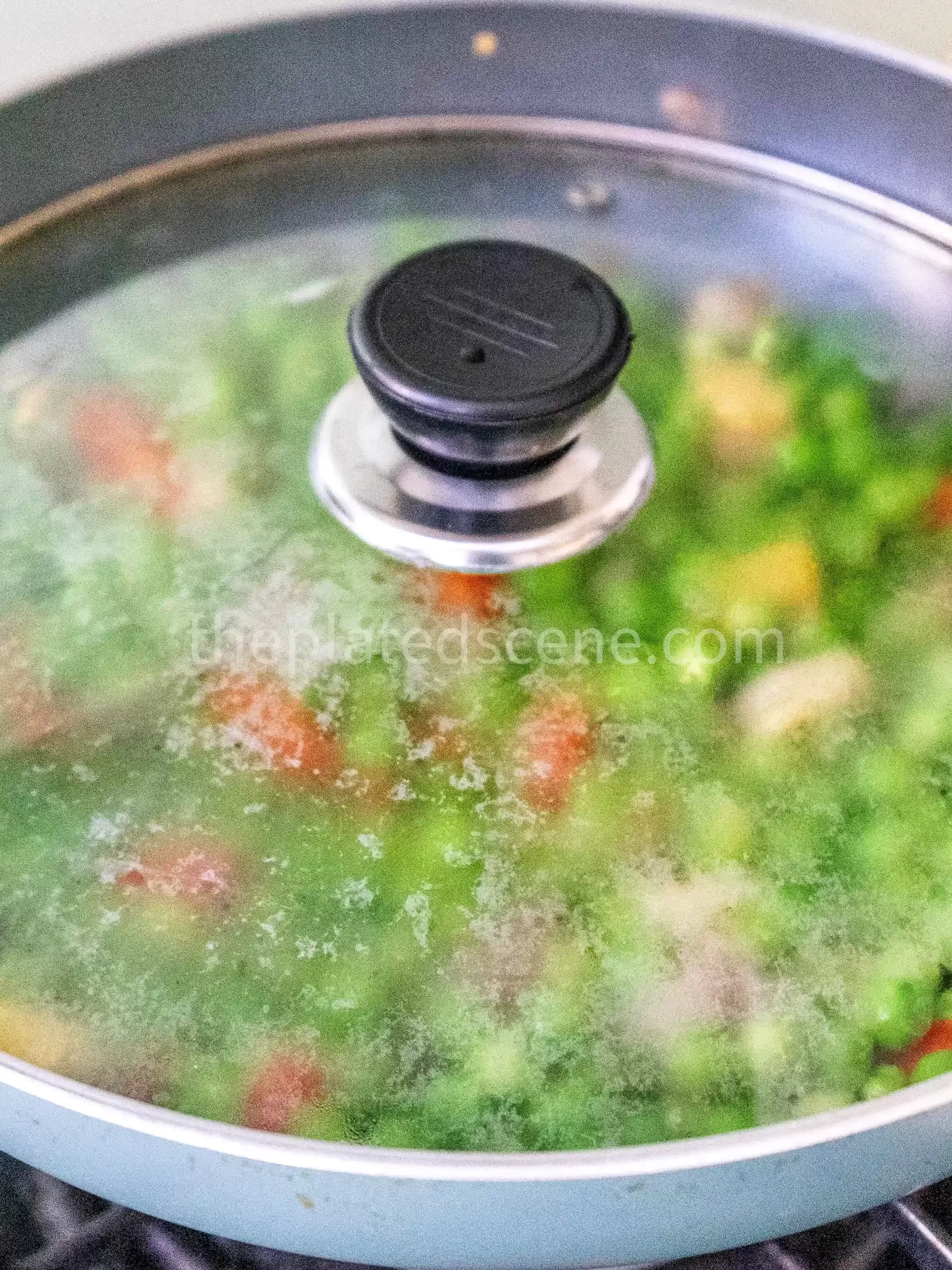
Add a splash of water (about 1-2 tablespoons) to prevent sticking and help soften the leunca. Stir occasionally to ensure even cooking. As the leunca cooks, it will turn a darker shade of green or brown and develop a softer texture. This process usually takes 5-7 minutes.
Step 5: Season the Sauté Leunca
Once the leunca has softened, add mushroom stock and a pinch of salt to the pan. Stir well to distribute the seasoning evenly. Taste the dish and adjust the seasoning as needed. If the bitterness of the leunca is too strong, you can add a pinch of sugar to balance the flavors.
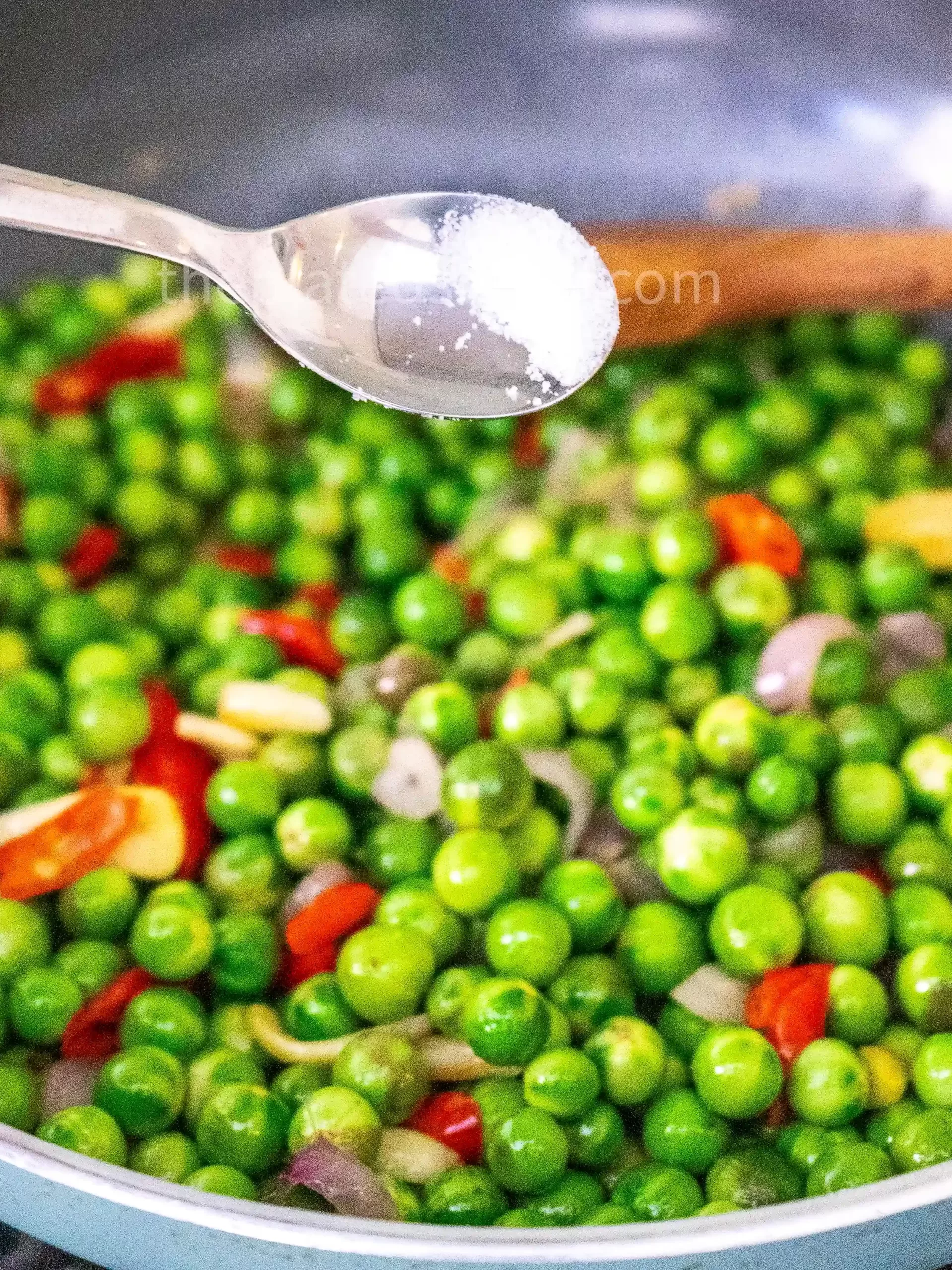
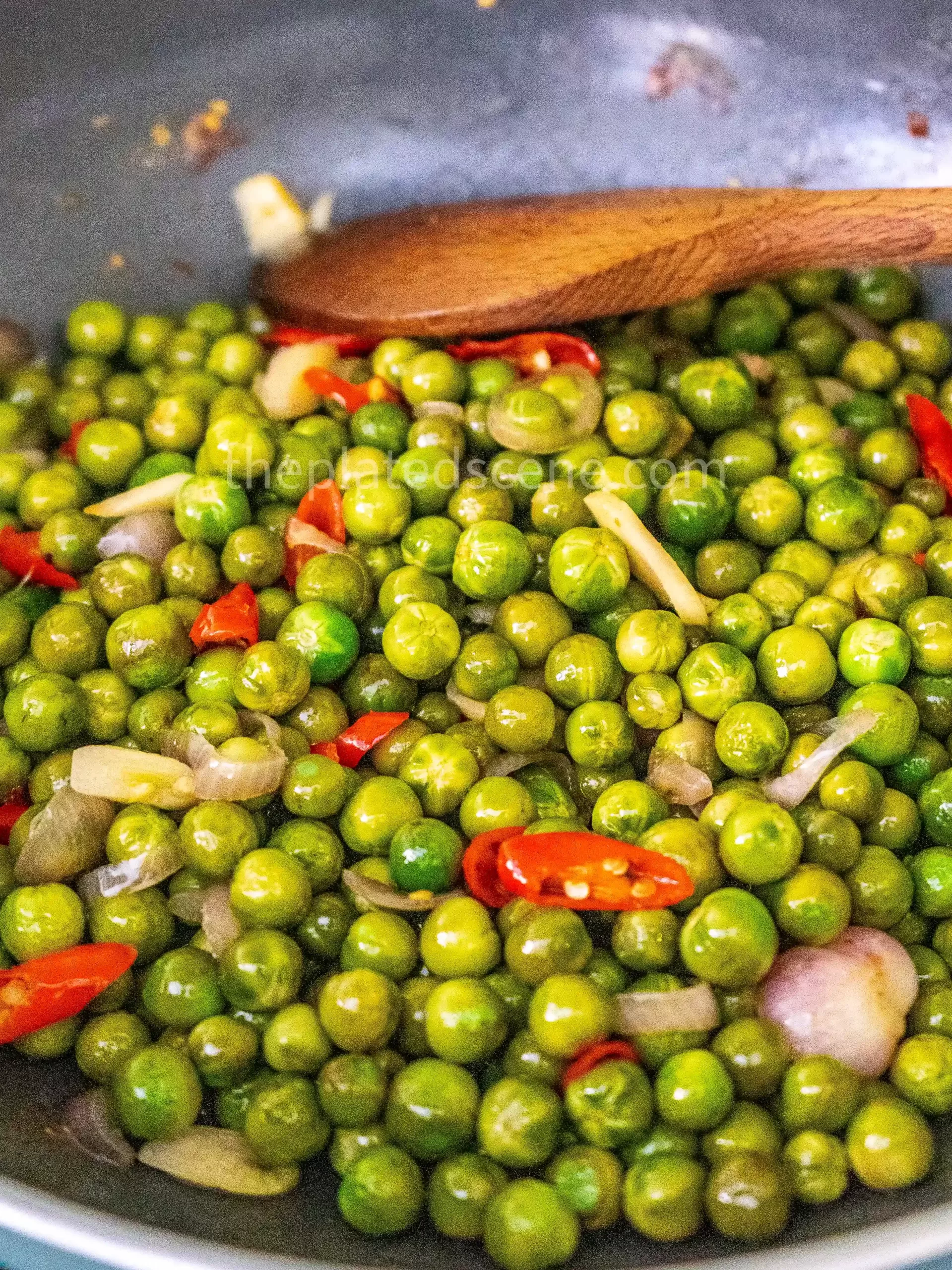
Step 6: Final Touches and Serve
Turn off the heat when the leunca is fully cooked, and the seasoning is well-balanced. Transfer the sauté leunca to a serving dish and pair it with warm steamed rice for a comforting meal.
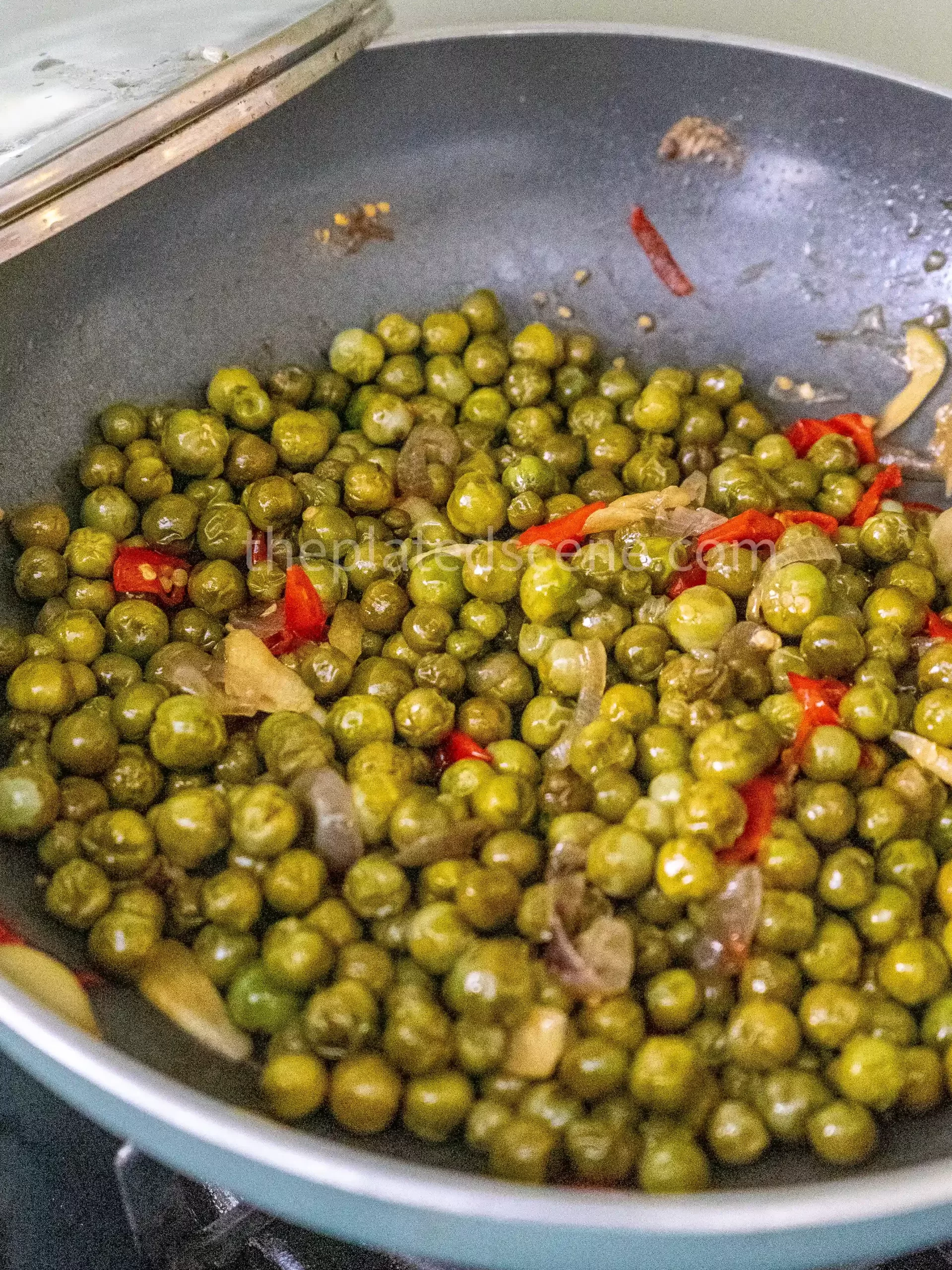
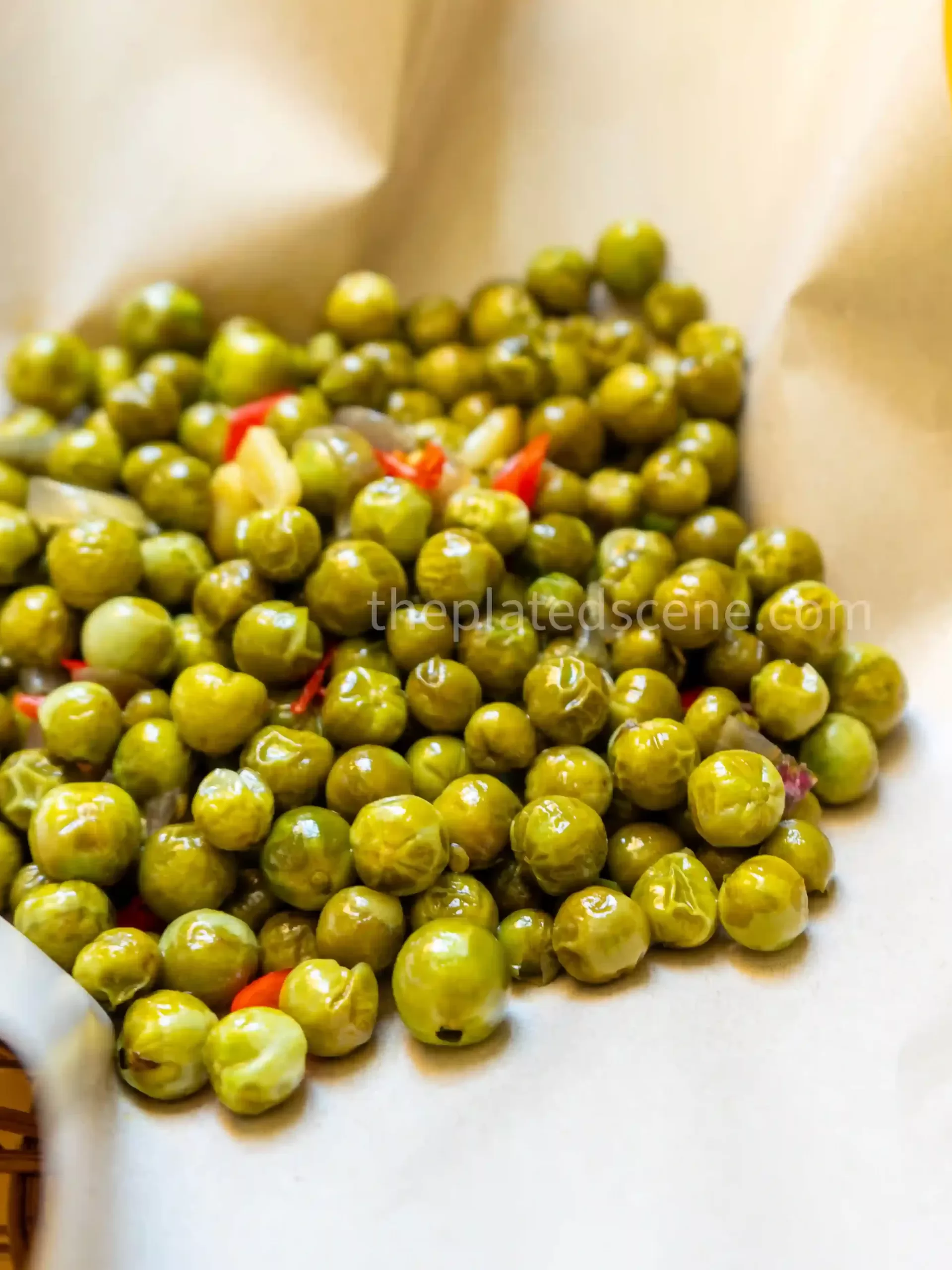
For an extra kick, serve your sauté leunca with sambal, fried tempeh, or tofu. The combination of flavors will create a truly authentic Indonesian dining experience.
Quick Tips for the Perfect Sauté Leunca:
- Don’t Overcook the Leunca: Cook until tender to maintain its texture.
- Control the Heat: Sauté the aromatics over low to medium heat to prevent burning.
- Adjust to Taste: Customize the seasoning and spice levels based on your preferences.
- Experiment with Add-Ins: Add tempeh, dried anchovies, or peanuts for extra flavor and texture.
With these simple steps, you’ll master the art of making sauté leunca, a dish bursting with Indonesia’s flavors. Enjoy! 😊
Other Recipes That You Might Love
- How to Cook Indonesia Vegan “Chicken” Noodle Soup
- Spiced Tofu in Banana Leaves (Pepes Tahu) Authentic Recipe
- Delicious and Easy Vegan Mushroom Satay in Indonesia Style


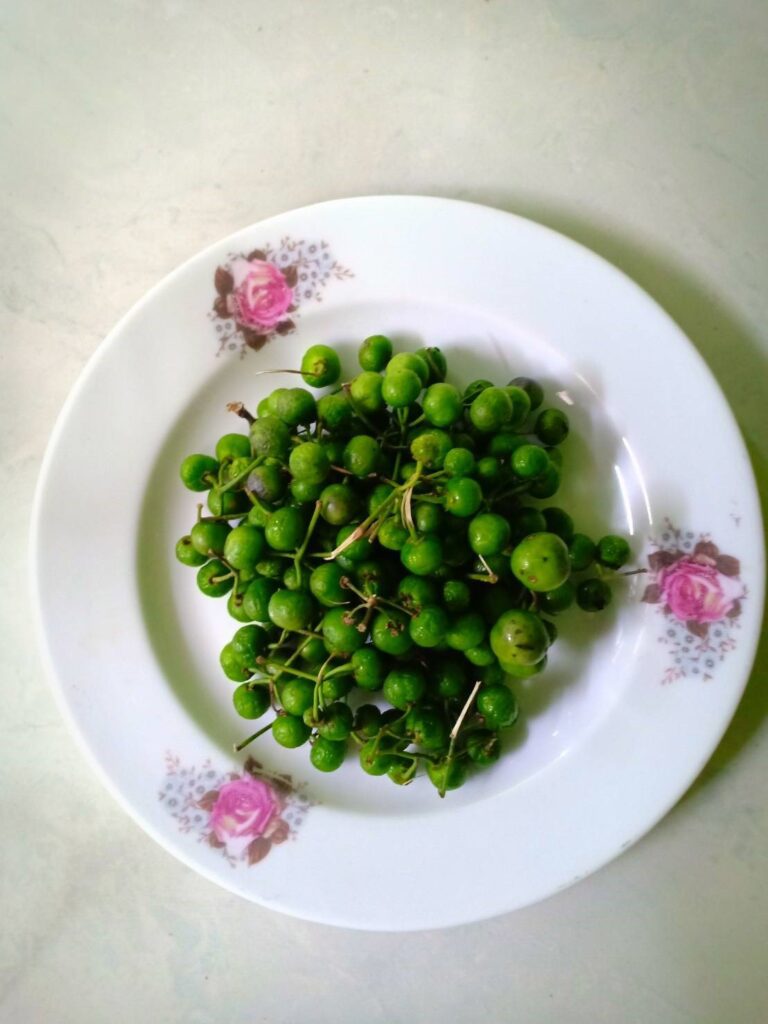
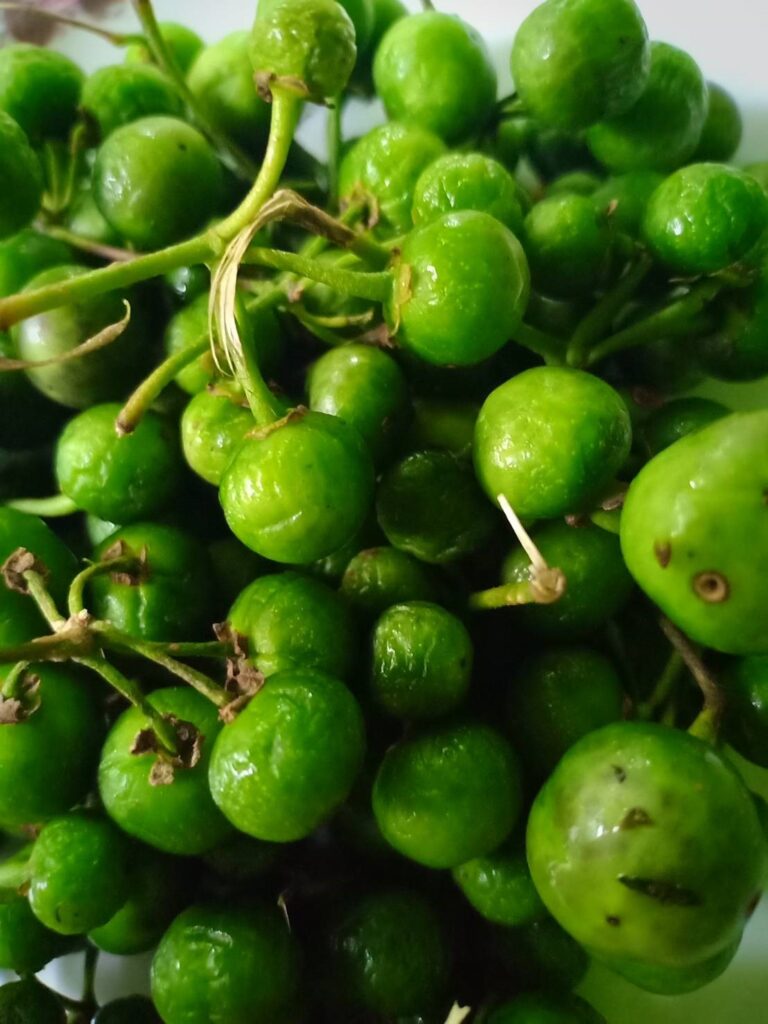
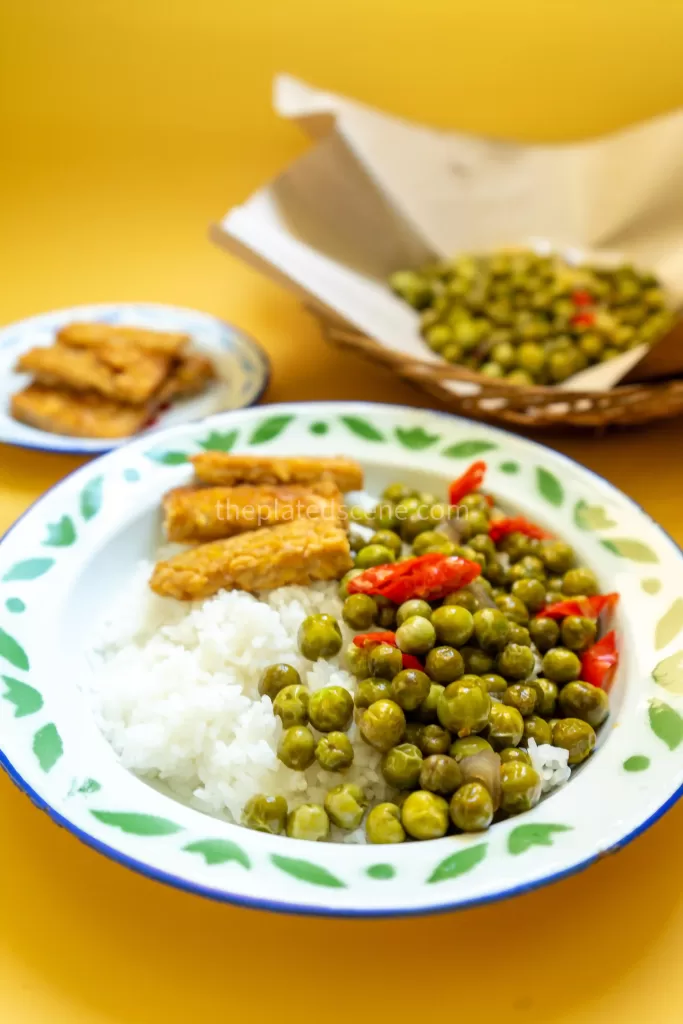
1 comment
[…] Simple and Authentic Sauté Leunca Recipe from West Java! […]
Comments are closed.